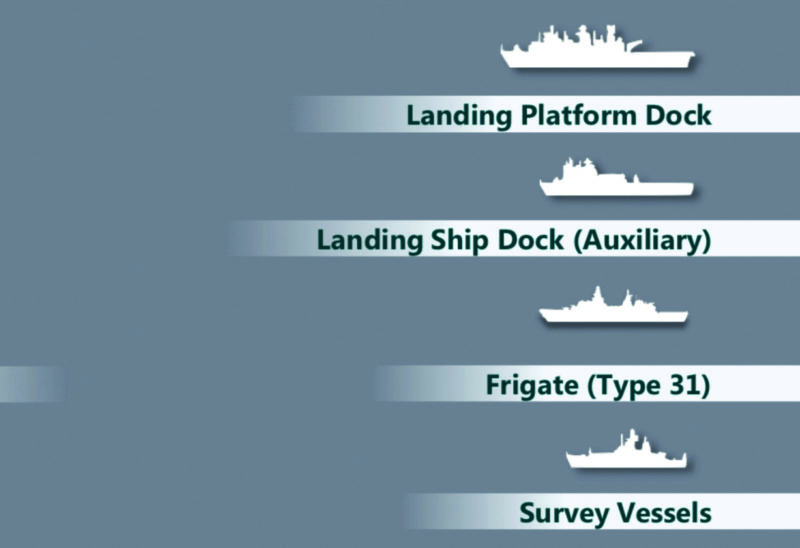
The recently published Defence Command Paper 2023 (DCP 2023) was intended to show the UK Government had learned lessons from the war in Ukraine. Addressing Parliament, Secretary of State for Defence Ben Wallace stressed he wanted to see a “threat-led-understanding and acting on the threats facing our nation as our sole mission.” Britain must be “forward and present” globally, “campaigning assertively and constantly, pushing back those threats and our adversaries.”
Just two years after the previous DCP, this year’s version announced investment in a Global Response Force, which sounded very much like a job for the Royal Navy. Albeit one it is already doing while chronically under strength, therefore needing more resources.
Wallace praised his government’s £24 billion extra over four years for Defence that amounted to a 10 per cent real terms increase since 2019 (ignoring the 16 per cent real terms cut 2010-2019).
It will not revive Britain’s emaciated military. Opposition Liberal Democrat Defence Spokesperson Richard Foord has rightly highlighted the aforementioned boost is not even new money, but re-announced, existing funding. Wallace actually only made a vague promise of more funds, perhaps raising the Defence budget to 2.5 per cent of GDP after improving Britain’s finances and growing the economy. That is something the Conservatives are unlikely to deliver on as they will probably lose the next General Election. Wallace also appeared to mock those who have genuine concerns about the lack of mass in the UK military and woeful force levels in the Army, Navy and Air Force.
He told MPs: “Members will not find shiny new announcements [in DCP 2023], comms-led policies driving unsustainable force designs or any major new platforms for military enthusiasts to put up on their charts on their bedroom wall.” He then added: “We stand by the Command Paper we published in 2021 but we must get there faster, doing defence differently and getting ourselves onto a campaign footing to protect the nation and help it prosper.” Odin is an enthusiast for the sort of robust military that can fight and win wars, while surviving losses and when facing enemies that have all the A.I., Cyber and drones they need – plus lots of soldiers, sailors, aviators and new combat equipment. No amount of derision poured on “enthusiasts” can hide the threadbare state of the UK military and lack of properly managed investment.
DCP 2023 claims mass involves not just platforms such as ships, aircraft and tanks, but also innovative systems and the skills of those manning them. If the UK Govt is basing that assumption on the war in Ukraine, it is blind to its true lessons. Yes, innovative systems and skills are to the fore, but so is the kind of heavy metal kit and mass the UK Govt seems to dismiss. It is war of big divisions and of attrition, which would gobble up Britain’s Army in weeks if not days. And the UK Govt should not be fooled by the atypical conflict in the Black Sea. It is an enclosed sea, with all the problems that has historically entailed, and two radically mismatched opponents. A war on the high seas between NATO and Russia, or between China and the West, would be horrific, with the most fearsome weaponry unleashed and massive casualties. The naval war in the Ukraine is a tea party compared to that and if Russia unleashed its sea-based long-range conventional strike arsenal on European nations, not least the United Kingdom, there would be many civilian deaths and severe damage to national infrastructure. It might force shell-shocked nations to capitulate.

In the Black Sea, Ukraine has not been able to knock out any of Russia’s Kalibr cruise missile-firing ships or submarines despite them being high priority targets.
So, warships still dominate the Black Sea, not drones or fantasy technology years from maturing, if ever. Nobody is arguing new technology is unimportant, but without mass, technology cannot deliver the effect DCP 2023 claims. While stressing the role of alliances and partners, particularly NATO, DCP 2023 maintains that the Royal Navy ‘will continue to provide the most comprehensive maritime contribution to NATO warfighting capability of any European navy’ via the carriers and anti-submarine units, and the new littoral strike groups. And yet, certainly in the latter case, there are rumours the Landing Platform Dock, and littoral warfare flagship, HMS Albion is soon to be sold, possibly to Brazil, further degrading a key UK capability. And, once again – as has happened with carriers, sea jets and frigates – years before a replacement is commissioned. According to DCP 2023, whose language is too often opaque, ‘UK capital ships will continue to operate as NATO flagships and we will be highly visible in NATO maritime activity in the High North, Baltic and Mediterranean Seas and the Atlantic Ocean.’ Britain remains committed to northern European defence through the Joint Expeditionary Force (JEF) and also to AUKUS. Following publication of DCP 2023 the Australian Strategic Policy Institute’s Euan Graham observed on Twitter that ‘lingering doubts that the war against Ukraine might cause the UK to scale back in its Indo-Pacific outreach’ had been dispelled.
He noted a ‘clear global emphasis’ in DCP 2023, despite ‘no new details on resourcing.’ He also praised DCP 2023 for mentioning China’s non-conventional modernisation, which ‘tacitly acknowledged as part of the rationale for modernising the UK’s nuclear deterrent.’ Mention of weaponry and platforms in DCP 2023 is restricted to those already ordered or being delivered. Many of the platforms identified in DCP 2021 via a graphic as part of the naval force structure to 2030 have been quietly discarded in the past two years. Might that be the reason why no charts for enthusiasts’ walls? To hide stealth cuts applied by the current Government?
In DCP 2023 there is no clarity on where the Navy goes from here. The Naval Strike Missile (NSM) will enable precision strikes against land or at sea, but not all destroyers and frigates will receive them. Sub-sea surveillance and sub-hunting advances brought by the multi-role ocean surveillance vessels, Type 26 frigates,and unmanned systems get a mention, as does autonomous and remote technology. However there is no mention of the Type 32 (frigate) and Joint Support Ship (future amphibious platform) programmes. The Royal Navy’s future composition is uncertain. DCP 2023 also outlines the air and missile defence modernisation effort, undertaken nationally and in conjunction with allies. The Sea Viper Evolution Ballistic Missile Defence (BMD) programme, for Type 45 destroyers, is underway with announced investments in extended range missiles, and contribution of a UK BMD Radar ‘to enhance protection of NATO.’
Considering the small number of Type 45s, and turgid pace of UK development so far, that role is unlikely to be fulfilled by a British destroyer any time soon. We will believe in the UK BMD capability when we see it up and running.
It is fortunate the USA has BMD-capable destroyers forward-deployed to a European base.
Overall DCP 2023 is a poorly written, shabbily thrown together bowl of word salad – lots of blue skies corporate gibberish with little, if anything, substantial to offer. The eminent UK-based blogger ‘Sir Humphrey’ summed it up perfectly. Odin gladly makes way for his thoughts, which are as follows: ‘It is, in the parlance of the day “a nothing burger.” Long on words, short on details, it adds very little to our understanding of the threats that the UK faces and practically nothing on the structure and shape of the armed forces that will defend us.’ Sir Humphrey’s blog added: ‘A final thought is that this paper seems to continue the fundamental problem that the MoD [Ministry of Defence] and wider UK has. It wants to maintain a global footprint, it wants to be a global player, it wants to make a difference – it just doesn’t want to resource it properly or take the tough calls needed as to where ruthless prioritisation will enable genuine “mission advantage”.’






Comments
Sorry, comments are closed for this item